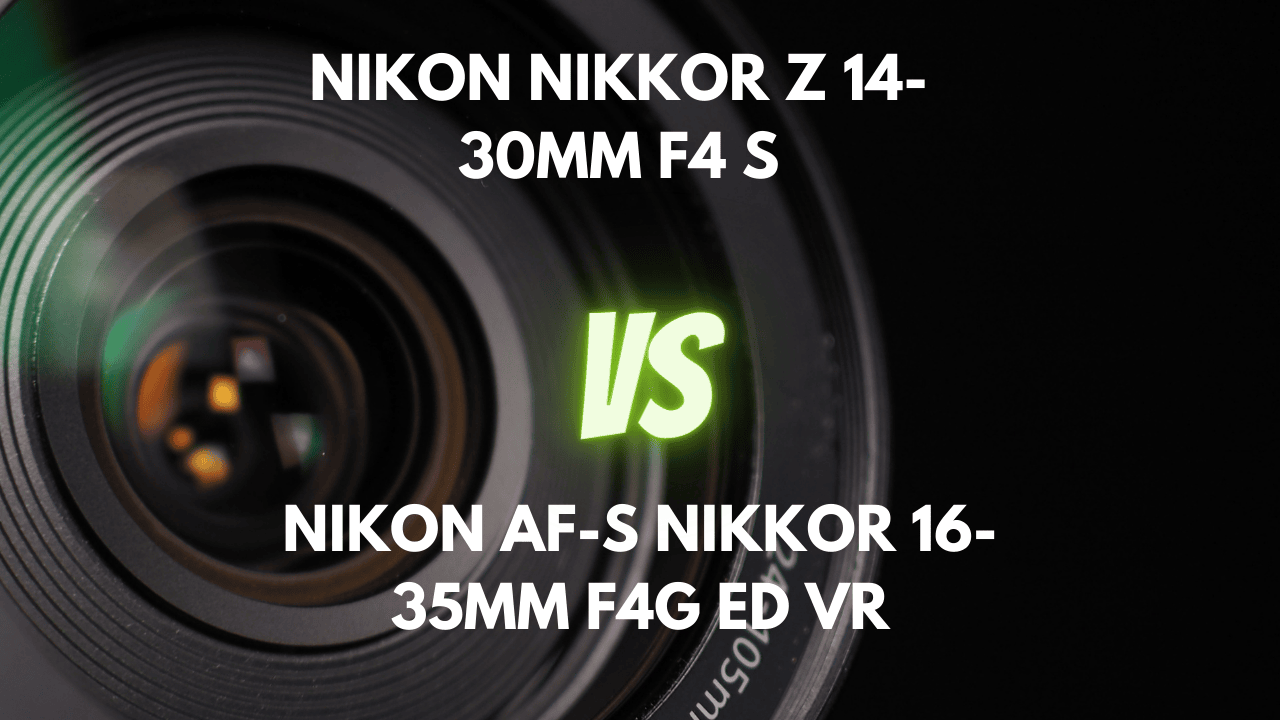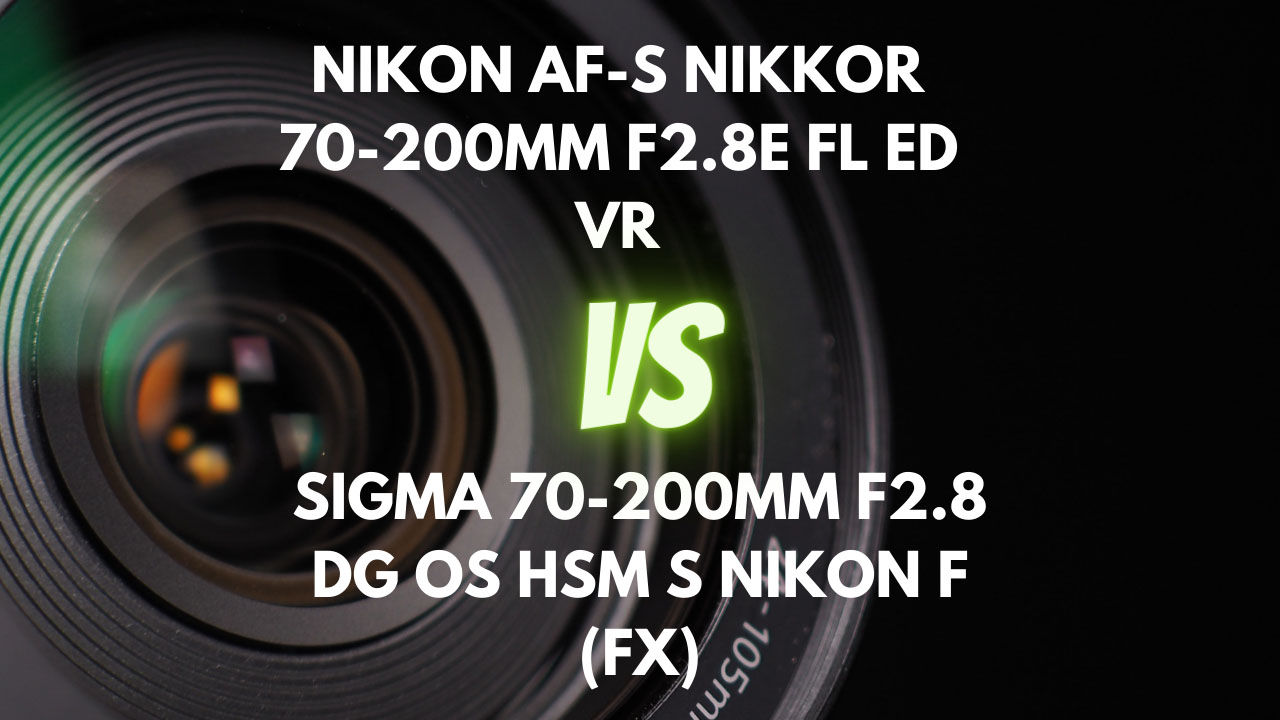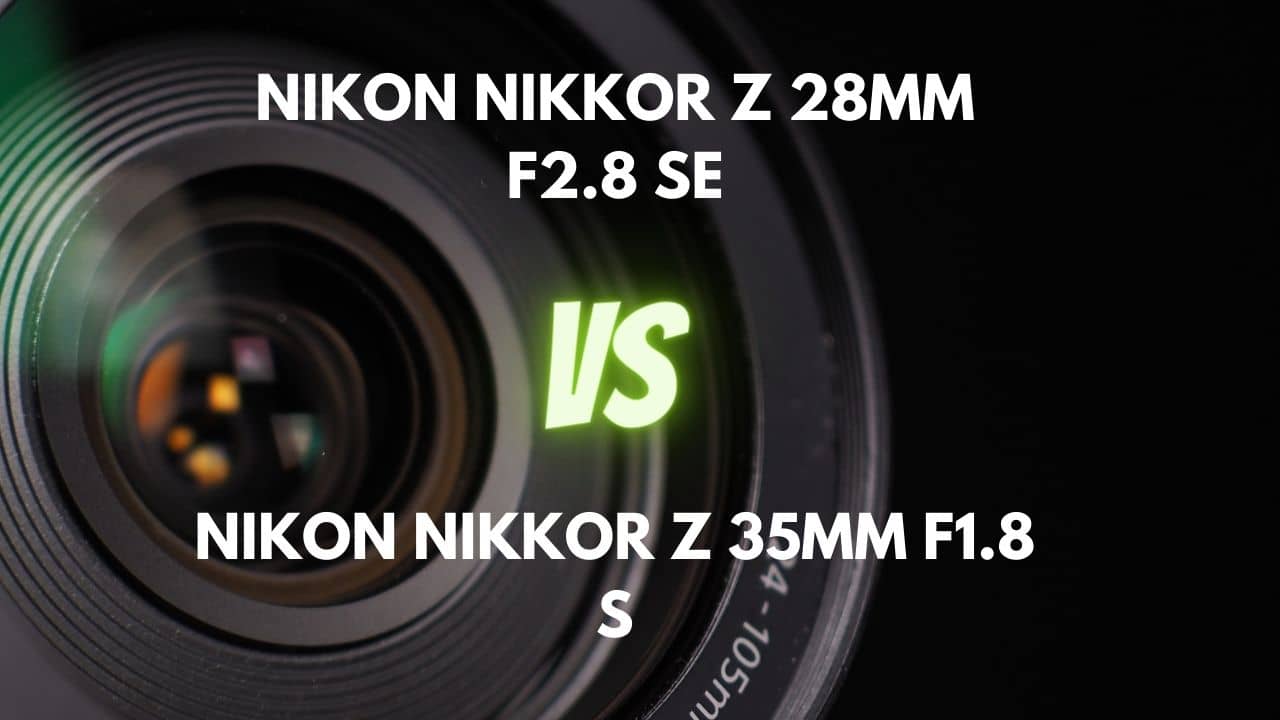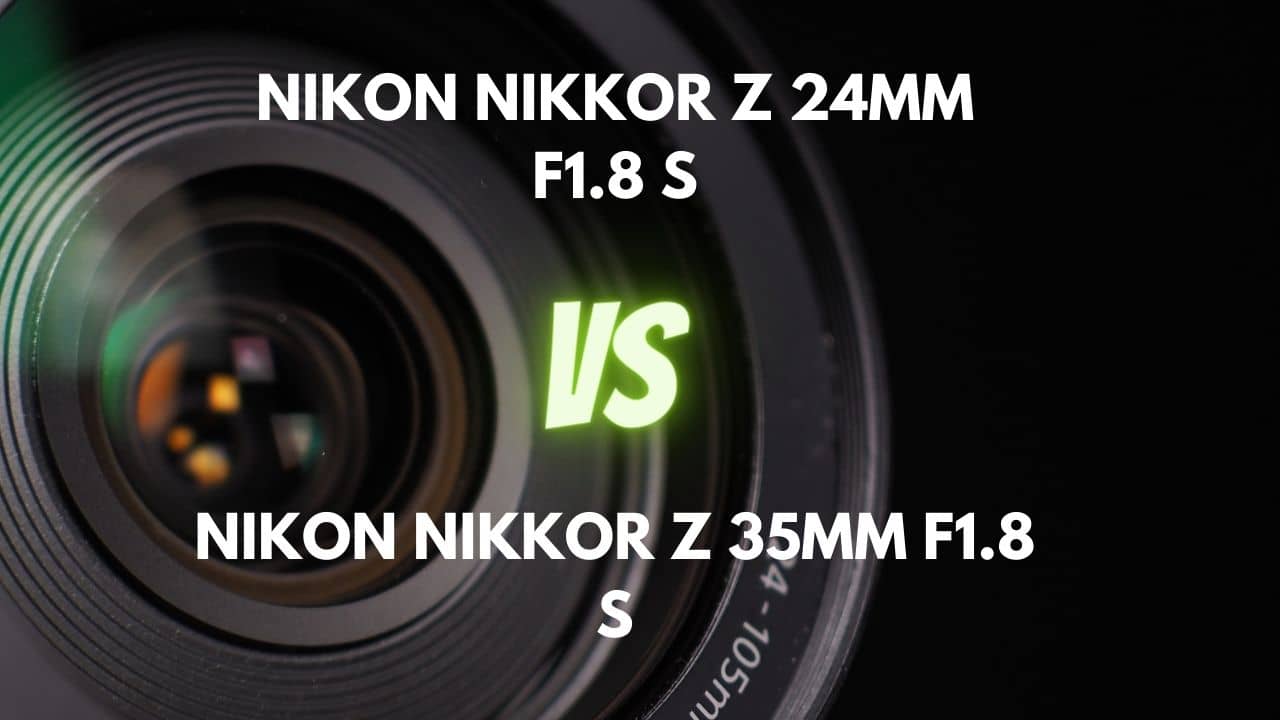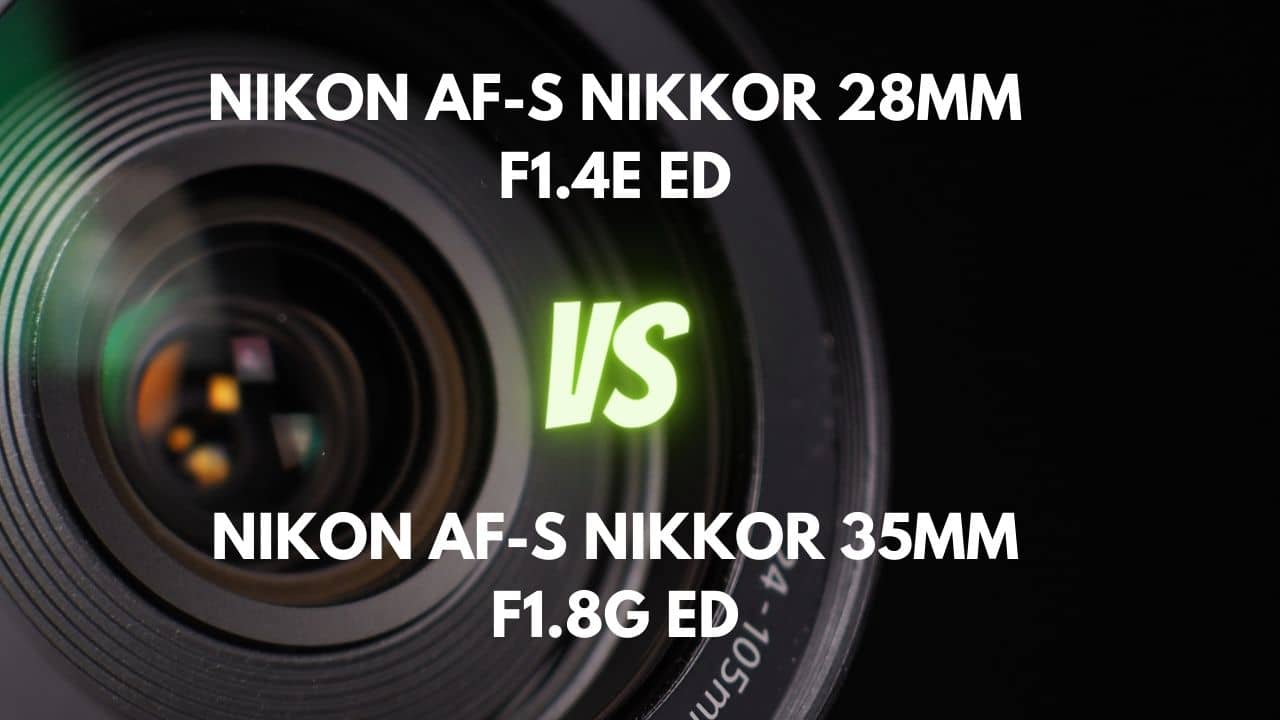Are you a passionate photographer on the hunt for the perfect wide-angle lens to elevate your creative work? If so, you’re in luck!
In this comprehensive article, we’ll be delving into the world of wide-angle photography and comparing two exceptional lenses: Nikon 18-35mm f/3.5-4.5 and Nikon 16-35mm f/4.
These lenses are often sought after by photographers for their ability to capture stunning landscapes, awe-inspiring architecture, and intimate environmental portraits. We understand that choosing the right lens can be a daunting task, especially with so many factors to consider.
As we explore the ins and outs of these two lenses, you’ll discover their unique strengths and weaknesses, helping you make an informed decision based on your photography style and needs. Whether you’re an avid landscape photographer in search of a lightweight lens with minimal distortion or a portrait enthusiast aiming for exceptional bokeh and low-light performance, this article is designed to help you find the perfect match.
Embark on this journey with us, and unlock the full potential of your photography with the right wide-angle lens.
By the end, you’ll be armed with the knowledge and confidence to choose the perfect companion for your artistic endeavors.
So, let’s dive in and explore the captivating world of wide-angle photography with the 18-35mm and 16-35mm lenses!
Overview
| Nikon AF-S NIKKOR 18-35mm F3.5-4.5G ED | Nikon AF-S NIKKOR 16-35mm F4G ED VR | |
|---|---|---|
| Max Aperture | F3.5-4.5 | F4.0 |
| Aperture Type | Variable | Fixed |
| Focal Range (mm) | 18-35 | 16-35 |
| Max Format | 35mm FF | 35mm FF |
| Zoom Ratio (X) | 1.9 | 2.2 |
The Nikon 18-35mm f/3.5-4.5 has a variable aperture of f/3.5-4.5, meaning that the maximum aperture changes throughout the zoom range. However, it may have slightly reduced image quality and low light performance compared to a fixed aperture lens.
On the other hand, the Nikon 16-35mm f/4 features a fixed aperture of f/4.0, which remains constant throughout the entire zoom range. This allows for better low light performance, more consistent image quality, and a more robust build quality.
Design and Ease of Use
| Nikon AF-S NIKKOR 18-35mm F3.5-4.5G ED | Nikon AF-S NIKKOR 16-35mm F4G ED VR | |
|---|---|---|
| Diameter x Length (mm) | ⌀83×95mm | ⌀82.5×125mm |
| Weight (gr) | 385 | 680 |
| Filter Thread (mm) | 77 | 77 |
| Weather Sealing | Yes | Yes |
| Zoom Method | Rotary (internal) | Rotary (internal) |
| Distance Scale | Yes | Yes |
| DoF Scale | No | No |
| Hood Supplied | Yes | Yes |
| Hood Code | HB-66 | HB-23 |
The Nikon 18-35mm f/3.5-4.5 has dimensions of ⌀83×95mm and weighs 385 grams, making it more compact and lightweight compared to the Nikon 16-35mm f/4. This can be beneficial in terms of portability, balance, discreetness, storage, and ease of lens swapping. The smaller size and lighter weight make it a convenient option for photographers who prioritize a more mobile and unobtrusive setup.
The 16-35mm lens, with dimensions of ⌀82.5×125mm and a weight of 680 grams, is larger and heavier than the 18-35mm lens. While this may impact portability and balance, it might also indicate a more robust build quality. Both lenses feature an internal rotary zoom method, offering advantages such as consistent camera balance, compactness, and better weather sealing compared to extending rotary zoom lenses.
In conclusion, if portability and lightweight design are your top priorities, the 18-35mm lens would be the superior choice. However, if you can manage the additional weight, the 16-35mm lens may be better suited to your needs.
Lens Mount and Barrel
The Nikon 18-35mm f/3.5-4.5 has a metal lens mount with a rubber gasket, ensuring a secure connection to the camera body and protection against dust and moisture. The lens barrel is primarily made of high-quality plastics, offering a lightweight and budget-friendly option.
The lens is finished in Nikon’s mottled black matte finish, giving it an attractive appearance. The ergonomic design is user-friendly, and the lens maintains a constant overall length when zooming, as the front element moves within the lens body.
On the other hand, the Nikon 16-35mm f/4 also features a metal lens mount with a rubber gasket, providing a durable and reliable connection to the camera body and protection against the elements.
The lens barrel is made of plastic and has a weather-resistant sealing. While the exterior is not metal, it is durable and lightweight. However, the markings on the exterior may wear off over time, as there is no metal on the outside.
Weather Sealing
The Nikon 18-35mm f/3.5-4.5 offers basic weather sealing with a rubber gasket at the lens mount, which helps reduce dust and debris from entering the lens and the camera. However, it is not fully weather sealed as there are no internal seals at the rings, switches, or front of the barrel, and it lacks a fluorine coating on the front element.
On the other hand, the Nikon 16-35mm f/4 also provides a degree of weather sealing with a rubber gasket at the lens mount. The build quality impression is that of a solid plastic construction combined with a weather-sealed metal lens mount.
Both lenses are not fully weather sealed and offer similar basic protection. If you often shoot outdoor or in unpredictable weather conditions, weather sealing can be an important feature. However, if your primary shooting environment is indoors or in controlled settings, weather sealing may not be a top priority.
Rings
The Nikon 18-35mm f/3.5-4.5 features two rings: a zoom ring and a focusing ring, both with different widths and textures. The zoom ring, with deep rubber ribs, is approximately 1/2″ wide and takes a ninety-degree turn to cover its range of focal lengths. This ring is smooth in action, requiring minimal force to move, and does not exhibit zoom creep.
The focus ring, just under an inch wide, has rubber ribs of a slightly different texture. It has soft stops at the closest focus and slightly past infinity, taking around one hundred degrees to cover its focusing range. Both rings are well-damped and smooth, but the focusing ring feels plasticky and exhibits some slack/play between its movement and focus action, making accurate manual focus wide open slightly challenging. A windowed distance scale is located between the two rings.
In contrast, the Nikon 16-35mm f/4 also has a zoom ring and a focus ring. The zoom ring is close to the camera body and smoothly moves through a quarter-turn between the 16mm and 35mm focal lengths. The focus ring, located toward the front of the lens, rotates through a quarter-turn to cover the focus distances. Both rings have ridged rubber coatings for a secure grip and are well damped. The zoom ring’s ridges are wider than those on the focus ring and have two notches cut into each ridge for added grip security.
However, some copies of the lens exhibit play between the focus ring and internal gears. The focus ring turns only 50 degrees, which is short but sufficient for accurate focus wide open at the long end. A recessed distance scale with four settings in meters and feet is placed in front of the focusing ring, but no depth-of-field markings are present.
In conclusion, both lenses offer distinct advantages in ring design. The 18-35mm lens provides a smoother zoom ring and a wider focusing ring with a more comfortable throw, while the 16-35mm lens features better grip security and a more durable focus ring. However, the 16-35mm lens offers superior precision and control with its ridged rubber coatings and notches, making it the better choice for photographers who prioritize handling and accurate focus adjustments.
Switches/Buttons
The Nikon 18-35mm f/3.5-4.5 features a single switch for controlling the autofocus, marked M and M/A. This switch is easily accessible and user-friendly. Moreover, the lens allows for manual focus override even when the switch is set to the M/A position. However, there are no other switches or buttons on this lens.
In contrast, the Nikon 16-35mm f/4 has two slider switches positioned behind the focusing ring on the lens barrel. The top switch controls the focus mode, while the lower one toggles the VR II stabilization on and off. This design offers more control options for the user, which could be advantageous depending on your shooting preferences.
In conclusion, the 16-35mm lens has a superior design in terms of switches/buttons, providing more functionality and control with the additional VR II stabilization switch. This added feature can enhance image stability and give photographers an extra edge in capturing sharp images.
On the other hand, the 18-35mm lens offers a simpler design with only one switch for autofocus control. While both lenses cater to different user preferences, the 16-35mm lens takes the lead in terms of functionality and control offered by its switches/buttons.
Filter Thread
The Nikon 18-35mm f/3.5-4.5 features a 77mm filter thread that remains stationary during focusing, making it convenient for photographers using graduated filters and polarizers. On the other hand, the Nikon 16-35mm f/4 also boasts a 77mm filter thread, designed to cater to landscape photography enthusiasts. Its exterior plastic construction is lightweight and has the advantage of bouncing back when dropped.
Both lenses are compatible with various filters such as ND, IR, and CPL, making them attractive to photographers who frequently use filters. To protect the lenses and enhance image quality, it is recommended to use high-quality filters like the Hoya multicoated HD3 UV or the B+W 77mm 010.
Lens Hood
The Nikon 18-35mm f/3.5-4.5 comes with a Nikon HB-66 lens hood, featuring a petal-shaped design and a plastic bayonet finish. This lens hood securely attaches to the lens without wobbling and can be smoothly rotated. It also has a smooth interior and can be reversed for convenient storage.
On the other hand, the Nikon 16-35mm f/4 includes a Nikon HB-23 lens hood, which is reversible and easy to store. The lens hood is shorter due to the lens’s wide-angle of view, and it can be used with a polarizer filter. The HB-23 lens hood is also used with the Nikon 17-35mm lens.
In conclusion, the lens hood choice largely depends on the photographer’s preferences and requirements. The 18-35mm lens’s petal-shaped Nikon HB-66 lens hood offers a secure fit and smooth rotation, while the 16-35mm lens’s Nikon HB-23 lens hood provides compatibility with polarizer filters and features a compact design for wide-angle shots. Both lens hoods are reversible for easy storage, making them practical and efficient options for photographers.
Focusing and Optical Stabilization
| Nikon AF-S NIKKOR 18-35mm F3.5-4.5G ED | Nikon AF-S NIKKOR 16-35mm F4G ED VR | |
|---|---|---|
| Autofocus | Yes | Yes |
| AF Motor | Silent Wave Motor | Silent Wave Motor |
| Rotating Front Element | Does not rotate on focusing | Does not rotate on focusing |
| Min Focus Distance | 0.28m | 0.28m |
| Max Magnification (X) | 0.2 | 0.25 |
| Full-Time Manual Focus | Yes | Yes |
| Focus Method | Internal | Internal |
Focusing Performance
The Nikon 18-35mm f/3.5-4.5 boasts a quick and silent autofocus performance due to its AF-S drive. It also features manual focus override and a smooth focus action. Taking approximately one second to focus from the closest distance to infinity, this lens exhibits a slight focus breathing when focusing at very close distances.
The lens length remains constant, regardless of focus and zoom settings. In low-light situations, the autofocus performance is comparable to the Nikon 16-35mm VR and is reliable and accurate in good light.
Conversely, the Nikon 16-35mm f/4 offers a fast, accurate, and very quiet autofocus system, thanks to its Silent Wave Motor (SWM). This lens can focus in low-light situations without issues and provides a quick autofocus acquisition speed. It also has manual focus override for added control.
The focusing speed is excellent, taking only 0.5 seconds to go from close to infinity, with a smooth and well-damped manual focus action. However, some copies of the lens may have some play between the focus ring and internal gears. The lens records audible clacks and snaring sounds when focusing, but VR-operation is quiet.
In conclusion, both lenses have their strengths in focusing performance. The 18-35mm lens delivers quick, silent autofocus and consistent lens length, while the 16-35mm lens boasts rapid autofocus. Both lenses perform well in low-light situations. The choice ultimately depends on your specific needs and preferences, but the 16-35mm lens slightly outperforms the 18-35mm lens in focusing speed and low-light capabilities.
Optical Stabilization
The Nikon 18-35mm f/3.5-4.5 does not offer optical stabilization, while the Nikon 16-35mm f/4 is equipped with a Vibration Reduction II system. Nikon claims that this system can provide an advantage of up to 4 stops, although actual results may vary. Field tests have demonstrated up to 3 stops of longer shutter times at the long end and up to 2 stops at the short end of the focal range with a steady subject.
The Vibration Reduction system increases shutter delay in daylight but enables hand-holding at least 1.5 stops slower than the focal length would normally allow. The VR operation is quiet, and there is a switch to turn it on or off. The lens features only one mode of stabilization and does not produce noise when using VR.
While optical stabilization is not as essential for wide-angle lenses as it is for telephoto lenses, it can still be beneficial in certain situations, such as shooting in low-light conditions, at slower shutter speeds, or when recording video. Many modern cameras now offer in-body image stabilization (IBIS), which can effectively work with wide-angle lenses to minimize the effects of camera shake, even if the lens itself doesn’t have built-in optical stabilization.
In conclusion, if optical stabilization is a priority for your specific needs, the 16-35mm lens with its Vibration Reduction II system is the superior choice. However, if your camera has IBIS or you plan to use a tripod or other support, the lack of optical stabilization in the 18-35mm lens might not be a significant concern.
Image Quality
| Nikon AF-S NIKKOR 18-35mm F3.5-4.5G ED | Nikon AF-S NIKKOR 16-35mm F4G ED VR | |
|---|---|---|
| Special Elements | 2 ED glass elements, three aspherical elements | 2 ED glass elements, 3 aspherical lenses and Nano Crystal Coat |
| Diaphragm Blades | 7 | 9 |
| Circular Aperture | Yes | Yes |
Aberration
The Nikon 18-35mm f/3.5-4.5 demonstrates excellent control over chromatic aberration, with moderate levels of lateral chromatic aberration at 18mm that decrease further at 35mm. Longitudinal chromatic aberration is well-managed, and there is no noticeable coma, even on a 36 MP camera. Additionally, the lens does not suffer from spherical aberration.
On the other hand, the Nikon 16-35mm f/4 showcases impressive chromatic aberration control, with practically no evidence of lateral chromatic aberrations. Even when shooting raw, this defect is barely noticeable, and modern Nikon digital SLR bodies can automatically correct for it when shooting JPEG. The lens also produces negligible levels of coma and spherical aberration, resulting in excellent overall optical performance with minimal aberrations.
In conclusion, both lenses perform admirably when it comes to aberration control. However, the 16-35mm lens has a slight edge with its almost non-existent lateral chromatic aberrations and automatic correction capabilities on Nikon digital SLR bodies. This makes the 16-35mm lens superior in terms of aberration control, although the 18-35mm lens also delivers a commendable performance in this aspect.
Sharpness
The Nikon 18-35mm f/3.5-4.5 offers varying levels of sharpness depending on the focal length and aperture used. Generally, the center sharpness is consistently good across all focal lengths and apertures, with the sharpest aperture typically between f/5.6 and f/8.
However, corner sharpness may be weaker at wider apertures and longer focal lengths, improving as the aperture is stopped down. Diffraction can limit sharpness at smaller apertures. Overall, the lens is considered very sharp, but certain compromises need to be made depending on shooting conditions.
In contrast, the Nikon 16-35mm f/4 exhibits good to excellent sharpness overall, with some softness at the edges at wider apertures. Center sharpness is generally good, with the sharpest aperture varying slightly depending on focal length. At 16mm, the center is already quite sharp wide open, with the sharpest aperture being f/5.6.
The corners are softer wide open but recover to a good level when stopped down. At 35mm, both borders and corners show good resolution, with stopping down not significantly increasing sharpness. The sharpest aperture is at f/8 or f/11, with some loss of contrast at f/22.
In conclusion, both lenses deliver impressive sharpness, with the 16-35mm lens providing slightly better overall performance, especially in the corners when stopped down. The 18-35mm lens is still very sharp but may require more adjustment in shooting conditions to achieve the desired results. Therefore, the 16-35mm lens is superior in terms of sharpness, but the 18-35mm lens remains a strong contender.
Bokeh Quality
The Nikon 18-35mm f/3.5-4.5 does not produce exceptional bokeh due to its small maximum aperture and short focal range, resulting in a large depth of field. At the longest focal length of 35mm and with a wide aperture of f/4.5, the bokeh is not bad, but options for subject isolation are limited unless the subject is extremely close.
On the other hand, the Nikon 16-35mm f/4 has a 9-segment diaphragm with rounded blades for pleasing bokeh. With an ultrawide-to-wide zoom, having anything substantially out of focus is bound to be a rare occurrence, but if you can get a background out of focus, bokeh is excellent.
In conclusion, while bokeh quality is not typically a primary concern for wide-angle lenses, the 16-35mm lens offers superior bokeh quality when compared to the 18-35mm lens. This can be particularly beneficial in environmental portraits or close-up photography, where a pleasing bokeh can add a creative touch and help separate the subject from the background.
Flare/Ghosting
The Nikon 18-35mm f/3.5-4.5 has a super integrated coating that does a great job in reducing ghosting and flares, even when shooting against the sun. The amount of ghosting and flare depends on the position of the sun or bright spot and the focal length, but at 18mm, flare is practically non-existent, while there are some visible ghosts and brighter spots here and there.
In comparison, the Nikon 16-35mm f/4 performs well in terms of controlling flare and ghosting, requiring strong backlight with the sun either inside or just outside the frame to produce visible flare. Although it’s not completely free of flare, it is much better than other lenses in this regard. The lens also responds well to stopping down and shows minimal effects of diffraction at f/16 and f/22. Overall, it delivers solid performance without being outstanding in any discipline.
In conclusion, both lenses exhibit good control over flare and ghosting.
Vignetting
The Nikon 18-35mm f/3.5-4.5 exhibits noticeable vignetting at 18mm and wide open at f/3.5, which can be reduced by stopping down to f/5.6 or using a slim polarizing filter. Zooming in to 24mm and 35mm also reduces vignetting. However, the vignetting is not significant when stopped down or at other focal lengths.
On the other hand, the Nikon 16-35mm f/4 shows noticeable vignetting in open-aperture shots at all focal length settings, but it is not very obvious and can be easily resolved by closing down the aperture by one or two stops. At 16mm, the vignetting is pretty strong, but the center performance is already very good even at maximum aperture.
In conclusion, both lenses exhibit some level of vignetting, which is common in wide-angle lenses. The 18-35mm lens has more noticeable vignetting at 18mm when wide open, but it can be easily managed by stopping down or using a polarizing filter.
The 16-35mm lens has a more consistent vignetting across its focal length range, but it can also be reduced by stopping down the aperture.
Neither lens can be considered clearly superior in terms of vignetting, as both require some degree of adjustment to minimize the effect.
Distortion
The Nikon 18-35mm f/3.5-4.5 exhibits barrel distortion, especially at the widest focal length of 18mm, with a maximum distortion of 4.78%. However, the distortion reduces as you zoom in, with 24mm still showing a modest amount of barrel distortion and at 35mm, distortion is minimal.
The distortion pattern is uniform at either end of the zoom range, which should make applying corrections in image editing software fairly straightforward. Without in-camera correction, manual correction in post-processing is necessary to avoid curvy lines.
In contrast, the Nikon 16-35mm f/4 exhibits noticeable barrel distortion at 16mm (5.7%) but it can be corrected easily in post-processing using the Lens Corrections sub-module in Lightroom and Photoshop. As you zoom in, the distortion decreases, and at 24mm the lens is free of distortion.
However, pincushion distortion starts to appear as you zoom further in towards 35mm, with around 1.3% distortion which is noticeable in field conditions. Nikon SLRs offer in-camera distortion control when shooting JPGs, but correcting for the barrel distortion at the wide end can cut edges off of your composition. Shooting with Raw format allows for one-click distortion correction or adjustments using the Distortion slider to make less extreme corrections while preserving detail at the edges.
In conclusion, both lenses exhibit some level of distortion, which is common for wide-angle lenses. The 18-35mm lens has a more uniform distortion pattern, making it easier to correct in post-processing. The 16-35mm lens has a slightly more complex distortion pattern, with barrel distortion at the wide end and pincushion distortion at the telephoto end. However, it also offers in-camera correction for Nikon SLRs when shooting JPGs.
Overall, the 18-35mm lens may be considered slightly superior in terms of distortion due to its more uniform and manageable distortion pattern.
Final Verdict
After considering all the factors, it is evident that both the Nikon 18-35mm f/3.5-4.5 and Nikon 16-35mm f/4 have their own unique strengths and weaknesses, making the final verdict dependent on your specific needs and preferences in wide-angle photography.
The 18-35mm lens stands out for its lightweight design, more uniform distortion pattern, and ease of post-processing correction. This lens would be a great choice if portability and a simpler design are top priorities, as well as for photographers who are comfortable with manual distortion correction.
On the other hand, the 16-35mm lens shines in terms of its fixed aperture, additional functionality with switches/buttons, superior focusing speed, optical stabilization, bokeh quality, and overall sharpness. This lens is well-suited for photographers who prioritize low-light performance, more control, and versatility in a wide-angle lens.
In conclusion, if you value portability and a straightforward design, the 18-35mm lens would be the superior choice. However, if you seek better low-light performance, increased functionality, and more control in wide-angle photography, the 16-35mm lens is the better option.


